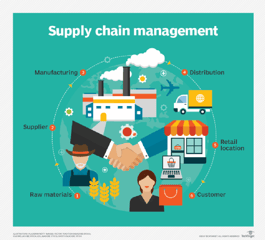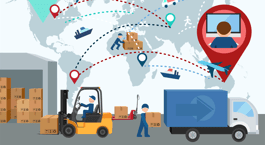“We have management systems. Transportation Management. Global Trade Management. Resource Management (ERP). What we don’t have, is an execution system.” - VP, Global Logistics of a Top 5 US Exporter
This is a continuation from Part 1
Digitization and automation (buzzwords of the year) are table stakes. It’s imperative that digitization and automation are coupled with systems of intelligence. Event-driven automated workflows with a rules engine based on origin/destination pairs - a system of intelligence - enables frictionless trade execution by turning a complex process into a series of "mouse clicks" - shortening the Trade-to-Cash/Order-to-Cash cycle.
To achieve the “new way”, the first step is to eliminate manual data entry in the execution process. Starting with pre-built integrations for improved systems integration. This prevents the re-keying of manual data - reducing admin costs and eliminating document discrepancies.
Once manual data entry is removed, “proactive risk minimization” with rules-based, event-driven workflow automation drives process improvements. This leverages origin/destination pairs to streamline the execution workflow from contract/sale-to-delivery. This enables “customer playbooks” that automatically set the shipment workflow, tasks, documents and teams for each contract/sales order based on terms - providing controls linked to the execution process and a volume neutral environment during peak periods/staff changes/vacations.
“Proactive risk minimization” improves visibility when making decisions at key inflection points along the trade execution process. Having carrier “reliability scores”, drayage delivery/pickup time performance indicators with real-time, landed costs while executing shipments - allows teams to optimize Cost of Goods Sold for every shipment.
These Trade Execution Systems of Intelligence, abstract the “multi-dimensional decisions and transactional tasks” so execution teams can do what they do best - deliver containers to customers on time, with a delightful buyer experience through exceptional customer service.
“Whoever delivers to the customer on time, wins the business”. That’s the discipline needed to win in global trade today. We’ve labeled this discipline, Trade Delivery.
Trade Delivery = Trade Execution Optimization + an Amazon-like Customer Experience
Streamlining the trade-to-cash/order-to-cash cycle is only half the equation. To win in the global marketplace, providing customers with an Amazon-like buying experience is the key.
From the start of a sale, to negotiating terms, collecting shipment requirements, allocating inventory, load planning, booking logistics and reviewing documentation - buyers need an experience that is seamless. That seamless experience provides buyers with the visibility to plan and run their business.
“We didn’t know how little we knew about our key suppliers until COVID-19 occurred. We had to get all kinds of [new] information from them and — to make [our] factories work — we had to give them information we never had before” - Supply chain executive from a Latin American food conglomerate
The key areas for providing a delightful buying experience include the following collaborative activities in an easy-to-use (no training required) workflow:
Contract drafting and signature:
- Managing offers, drafting contracts with detailed redlining, contract approval workflows and electronically signing contracts.
- Note: Contracts include Customer Sales Agreements (CSAs), specifically for producers that manage orders under an annual CSA.
Sales confirmations:
- Pulling order confirmations directly from your sales system (ERP/CRM), enabling e-commerce ordering capabilities to your buyers with auto-purchasing capabilities based on inventory levels.
Inventory control and allocation
- Planning loads from plant-to-freezer, elevator-to-transloader, warehouse-to-transload; determining what inventory positions match specifications of customer requirements; ensure first-in-first-out control methods to optimize COGS
Shipment updates at key inflection points in the value chain
- From origination (plant/elevator), to storage location (warehouse/freezer), to loading into containers (i.e., transloading), to carrier departures/arrivals (ocean, rail, road)
- :
Documentation review and approval:
- Sending draft document sets for customer review, allowing customers to make edits of each document with notes, collaborative document approval workflows and consigning final documents to your buyer / buyers bank.
Settlement and invoicing;
- Finalize settlement to ensure payment is collected upon delivery of customer obligations
- Auditing 3rd party invoices to rates with service providers to ensure accurate billing
The heroes of this story - trade execution teams (think Luke Skywalker) - have been shackled to the chains of “planned obsolescence” for too long with legacy systems. Systems designed for trade execution (Yoda), give trade execution teams (Luke Skywalker) the competitive advantage (lightsaber) they need to thrive in this New Era of Trade.
Connect with us to learn more about using trade execution as a competitive advantage at hello@tradelanes.co





Leave a Comment